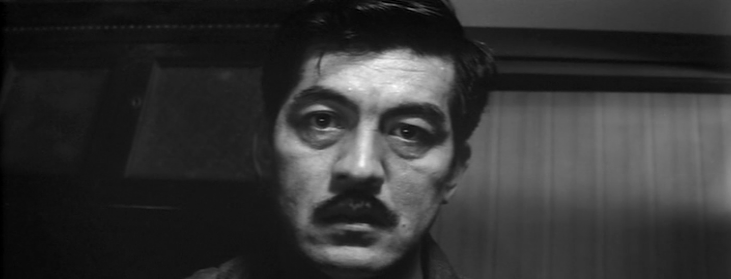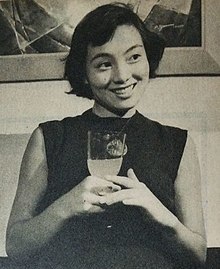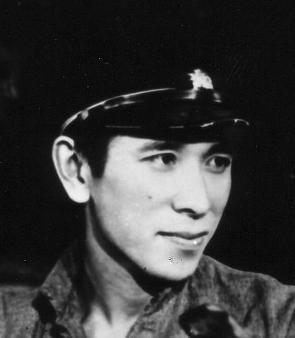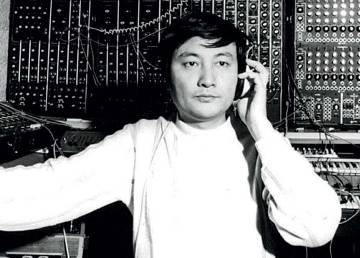Physical Address
304 North Cardinal St.
Dorchester Center, MA 02124

Other titles: The Hunger Straits, Straits of Hunger (literal English titles); Starvation Straits (alternative English title) Le détroit de la faim (literal French title); Szökevény a múltból [A Fugitive from the Past] (alternate Hungarian title)
| Production Company | Toei (Tokyo) |
| Scenarist | Suzuki Naoyuki |
| Source | Kiga Kaikyō (novel), by Mizukami Tsutomu (aka, Minakami Tsutomu) |
| Producer | Ōkawa Hiroshi |
| Planning | Okada Shigeru (uncredited), Tsujino Kimiharu |
| Cinematography | Nakazawa Hanjirō |
| W106 Development Team | Midorikawa Michio, Miyajima Yoshio, Onishi Shozo, Yamamoto Toyotaka |
| Art Director | Mori Mikio |
| Music | Tomita Isao |
| Editing | Nagasawa Yoshiki |
| Performers | Mikuni Rentarō (Inukai Takichi,1 later known as Tarumi Kyōichirō); Hidari Sachiko (Sugito Yae, a prostitute); Ban Junzaburō (Inspector Yumisaka); Takakura Ken (Detective Ajimura); Fujita Susumu (Police Chief Ogimura); Mitsui Kōji (Motojima, Yae’s employer); Sawamura Sadako (Motojima’s wife); Katō Yoshi (Yae’s father); Kazami Akiko (Toshiko, Tarumi’s wife); Anjō Yuriko (Katsuragi Tokiko, Yae’s friend); Shindo Sachi (Yumisaka’s wife); Matsudaira Mineo (Ichirō, Yumisaka’s teenage son); Matsukawa Kiyoshi (Yumisaka’s younger son); Yana Nobuo (Machida, a young yakuza); Toyama Takashi (Sgt. Tajima); Takasu Junnosuke (Takenaka Koichi, Tarumi’s secretary); Andō Mitsuo (Kijima Chūkichi, an ex-convict); Mogami Itsuma (Numata Hachirō, an ex-convict) |
| Status | Extant (see Length below) |
| Photography | Black and white |
| Format | 16 mm blown up to 35 mm (see Commentary and Analysis below) |
| Ratio | 2.66 : 1 (anamorphic widescreen) |
| English Subtitles | Yes |
| Original Release Date | January 15, 1965 |
| Length | 192 minutes (director’s cut, possibly lost); 183 minutes (“restored” cut); 167 minutes (producers’ cut); 175 minutes (“French” cut) (See Notes on the Production below for details.) |
| Awards and Festival / Retrospective Screenings | KJ “Best Ten”: #5 (1964),2 KJ Best Actor [Mikuni]; Blue Ribbon Award: Best Screenplay (1965); Mainichi Film Concours: Best Director, Best Screenplay, Best Actor [Mikuni], Best Actress [Hidari], Best Supporting Actor [Ban] (1965). KJ All-Time Greatest Japanese Films: #6 (1995), KJ All-Time Greatest Japanese Films: #3 (1999); Screenings: Tokyo FILMeX (2004); IFFR (International Film Festival of Rotterdam, 2005); Melbourne International Film Festival (2005); MOMA Retrospective (2016) |
This review is dedicated to Dudley Andrew and Carole Cavanaugh.3
In September, 1947, a savage typhoon strikes the Tsugaru Strait (“hunger straits,” kigakaikyō) between the southern coast of the northernmost Japanese island, Hokkaidō, and the northern coast of Honshu, Japan’s main island. A ferryboat, the Sounmaru,4 traveling through the strait between the two islands with hundreds of passengers, is caught in the storm and capsizes.
Meanwhile, at Iwanai in Hokkaidō, two men wearing military uniforms from the recent war run away from a fire, carrying something away with them. The burning house belongs to husband-and-wife pawnbrokers, the Sasadas. A tall man wearing ragged clothes, Inukai Takichi, impassively watches the fire from the train station. The two uniformed men, both ex-convicts, arrive at the station and give Inukai money to buy train tickets for all of them.
The three men escape on the train to Hakodate, and the convicts inadvertently reveal that they set the fire and stole a great deal of money, disturbing Inukai. When the train is halted by the conductor because of the worsening storm, all three disembark and walk down the railroad tracks.
At Hakodate, the three men witness the ferry disaster. From his hiding place, Inukai notices on the beach a police inspector, Yumisaka, who suffers from a chronic cough, assisting with the rescue. The desperate fugitives steal a boat in the confusion and begin to cross the strait at the height of the storm.
Sometime later, the dead bodies of the two ex-convicts wash up on shore. Yumisaka inspects the bodies and suspects foul play. Yumisaka’s team, investigating the killing of the Sasadas (which they don’t yet link to the deaths of the two men), discover that a tall “third man” signed the hostel registry in Asahi, where all three fugitives were staying on the night before the crime. The inspector and his team investigate the rocky coast of Shimokita, a peninsula in northern Honshu. Yumisaka finds there the ashes of the burned stolen boat, and collects these as evidence.
In Shimokita, Inukai wanders dazed, still wearing his ragged clothing, and finds a cabin belonging to an itako (spirit medium). The itako is heard speaking in the voice of a dead person. Also in the cabin is a woman, Sugito Yae, praying: it is her mother whose spirit is being summoned. Inukai, watching the scene through a broken window, is so frightened of the itako and her talk of hell that he runs away. He catches a local train and meets Yae, who is on her way home. Out of compassion, she gives him food.
When they reach her town, Ōminato, Inukai follows Yae to the brothel, Hanaya House, where she works. She welcomes him in, and he washes and shaves. She points out Mount Osorezan (Mount Dread), which they both can view from her window. A storm breaks out, and she discovers that he fears lightning and thunder, much to her amusement. They have sex and he stays the night.
Next morning, Yae pares Inukai’s fingernails and discovers his badly-mangled right thumb, the result of a mine accident. Before he departs, he leaves behind a newspaper within which is a 34,000-yen tip, which he claims was not stolen, but came from the black market. She tries to run after him, but he has disappeared. She finds a cut fingernail of his on the floor and keeps it as a memento.
At Yunokawa hot springs in Hokkaidō, Yae discusses with her father her plans to pay the family’s debts and go to Tokyo. Yumisaka finds Yae there and questions her about Inukai. She lies about Inukai’s appearance and other details, and he falsely concludes that the man she slept with isn’t the man he’s seeking.
At Hakodate, Yumisaka’s boss berates him for wasting tax money on the investigation. On the verge of giving up, the inspector accidentally discovers photos of the convicts in the police file, and for the first time links the Sasada murders with the drowned bodies. At home, Yumisaka obsesses about the Inukai case, alienating his family. He theorizes that Inukai deliberately murdered the two men for the money, and that Yae had lied to him to protect the criminal. Yumisaka is granted permission to go to Tokyo for ten days to track down Yae.
In Tokyo, Yumisaka locates Tokiko, a prostitute friend of Yae’s, and sets up a stakeout at her home. Meanwhile, in the Kamedo area of the city, Yae has obtained a job getting customers into the bar where she works, but she is too timid and frightened, particularly of the local yakuza, to be successful. Living over the bar, she worships Inukai’s memory and keeps his fingernail and his newspaper, as well as much of the money he gave her.
Yae goes to visit her friend Tokiko, but flees when she spots Yumisaka waiting there. When she returns to the bar that night, she witnesses a savage fight break out among local yakuza. The police arrive to arrest both the gang members and her employer, the bar owner, and Yae, terrified, runs away, never to return.
Yae applies for a job with a kindly pimp, Motojima, and his equally friendly wife. They hire her despite her lack of a ration card, and she weeps with gratitude. Meanwhile, Yumisaka seeks help from a Tokyo detective in the seemingly hopeless task of finding Yae, then returns, discouraged, to Hakodate.
In 1957, during New Year’s celebrations in Tokyo, Yae is shown as relatively happy despite having been forced to become a prostitute again. Glancing at a newspaper, she spots the photo of a man and is astonished: she’s certain that the wealthy philanthropist shown in the picture, Tarumi Kyōichirō,5 is her savior, Inukai. She resolves to go to Maizuru, where Tarumi lives, to find out the truth.
Yae arrives in Maizuru, meets Toshiko, Tarumi’s wife, and is brought into the reception room of his elegant home. Toshiko then goes out shopping. Tarumi enters, sees Yae, but shows no sign of recognition. Despite her entreaties, he denies having ever met her, and she weeps, heartbroken. Tarumi calls in his male secretary, Takenaka, and asks the young man to prepare tea for his guest. Tarumi praises Yae for her gratitude towards the man who had helped her… though he doesn’t admit to being that man.
When a storm rises outside, she tells him she will leave, but he begs her to stay for tea. As he closes the window against the storm, which clearly disturbs him, he reveals his crushed right thumb. Recognizing this deformity, Yae ecstatically embraces him, but he desperately denies being Inukai. They struggle; he covers her mouth. His hand then moves to her neck and he strangles her. Horrified, he pulls her into an alcove, where she dies. Takenaka appears with the tea, sees Yae’s body and drops the tea tray on the floor. The young man tries to escape, but Tarumi strangles him. A little later, Tarumi drives a truck by the seashore in the storm.
Sometime later, young Det. Ajimura of the Maizuru police arrives to examine the bodies of Yae and Takenaka, which have been recovered from the sea. Ajimura is given the news clipping about Tarumi, found in Yae’s pocket. His assistant believes the two deaths were a double suicide, but Ajimura is skeptical.
Ajimura goes to Tarumi’s home to interview him and shows him Yae’s news clipping. Tarumi tells him that the dead man was probably Takenaka, his secretary, who’s gone missing. Tarumi is brought to the morgue: he identifies Takenaka, but claims not to recognize Yae.
An assistant informs Ajimura of Yae’s identity. Her father, who identifies her body, tells police that ten years before, an inspector named Yumisaka had questioned him about a tall man he was looking for. Police Chief Ogimura orders Ajimura to find Yumisaka.
Ajimura locates Yumisaka working at a lowly job in a reformatory for delinquents. Yumisaka identifies the photo of Tarumi from the newspaper as Inukai and also recognizes Sugito Yae’s name. He asks Ajimura’s permission to go to Maizuru to help with the investigation, adding that he will pay all his own expenses, and Ajimura accepts this offer.
Yumisaka and Ajimura go to Yumisaka’s home. His older son, Ichirō, reveals to the young detective that his father was fired from his police job because of his obsession with the Inukai case, and that their mother has had to work to provide for the family. As Yumisaka leaves the house with Ajimura, Ichirō calls him a “useless father.” However, he gives some money to his younger brother to give to him.
Tarumi appears at police headquarters for questioning. He claims to be surprised that they are treating him as a suspect, and denies that he knew Yae. He provides a few details of his past, including his former career as a farmer in Hokkaidō. When they begin to ask about the ferry disaster, however, he refuses to answer any more questions. Before he leaves, Yumisaka asks Tarumi if he knew the two convicts, and he denies it. He scoffs at the fact that Yumisaka, a retired policeman, is being allowed, against police rules, to interrogate him. After he leaves, Police Chief Ogimura concedes that their case is weak, as they have yet to prove that Tarumi is in fact Inukai.
Ajimura reveals to the Police Chief items which he considers to be physical evidence of Tarumi’s guilt: Yae’s ten-year-old newspaper and the fingernail. Both men conclude that the nail belonged to the killer.6 Ajimura also produces the register of the Asahi hostel where Inukai signed in for himself and the two convicts. Ogimura concludes that Tarumi murdered both the Sasadas and the convicts and orders his arrest.
Under interrogation, Tarumi is shown the hostel register with his signature, but he denies any connection to the Sasada fire. After Ajimura shows Tarumi the old newspaper, the latter angrily shouts that they still have no proof. However, when Ajimura confronts Tarumi with the fingernail, Tarumi tries to attack him, and then collapses.
The Police Chief urges Tarumi to tell the whole truth. Tarumi denies murdering the Sasadas or the two criminals. He claims that he first met the men in Sapporo when they all worked in the mines together, and only learned later they were former convicts. He truthfully explains that he didn’t go with them to the Sasadas’ pawn shop, but waited for them at the Iwanai station. He alleges that while crossing the strait in the stolen boat, Kijima fatally attacked his henchman, Numata, by throwing him overboard, and then tried to kill him. Tarumi in self-defense (he says) then beat Kijima and threw him overboard, rowing away as fast as he could.
After the storm, on the rocky coast of Shimokita, he located the money, still in the boat. It was then that he realized that the police wouldn’t believe his story if he turned himself in, and decided to keep the money and burn the boat to destroy the evidence of his theft. Ajimura doesn’t believe his version of events, but Tarumi cites the detective’s skepticism as proof that the police in 1947 would not have believed him either, if he’d surrendered. He claims to have had no choice but to keep the money and try to use it for a good purpose.
They then try to ask him about Yae, but he begs them to tell him that they believe his story. Until they answer him, he says, he will refuse to relate the rest of the tale. Chief Ogimura calls for a brief break.
In a separate room, the Chief asks both his subordinates and Yumisaka what they think. The former don’t believe Tarumi, and think he should be forced to speak further. Yumisaka, however, is nearly convinced of the story’s truth. Money, he concludes, made Tarumi a murderer and Yae a victim. “The very poor, when confronted with money, can resort to desperate acts,” he says. Yumisaka requests to speak alone with Tarumi and the Chief approves this.
Yumisaka enters Tarumi’s cell and presents the jailed man with the ashes from the boat he burned at Shimokita. He says that he hates Tarumi “deeply,” and tells him that he’s going back to Hokkaidō and will leave behind the ashes. But just after he exits Tarumi’s cell, Tarumi pounds the ashes with his fist and cries out. When Yumisaka, hearing his cries, comes back, Tarumi begs to accompany him on the night train to Hokkaidō. The detectives arrive and witness Tarumi’s breakdown. Ajimura suggests that the police grant Tarumi’s request in order to retrace his path from Hokkaidō to Maizuru and the Chief agrees with this proposal.
Handcuffed, Tarumi is transported by the police via train to northern Honshu, watched over by Yumisaka, Ajimura and the others. On the ferry crossing over the Tsugaru Strait to Hokkaidō, Yumisaka points out Shimokita, Yae’s home region, including Mount Osorezan. As a last gesture in honor of Yae, he proposes to throw one of two bouquets he is holding overboard in the direction of Shimokita and offers the other bouquet to Tarumi.
As Yumisaka chants the heart sutra, Tarumi approaches the railing to throw his bouquet. While throwing the flowers, however, he suddenly jumps overboard. As Yumisaka and the others watch helplessly, Tarumi/Inukai is swept away by the current. The only things visible from the stern of the boat are flying and crying seagulls… and the utterly peaceful sea.

Hidari Sachiko was one of the outstanding actresses of the Golden Age of Japanese Cinema. In her twenties, she gave a notable performance in the small but memorable role of a sexually freewheeling hotel maid in Gosho Heinosuke’s An Inn at Osaka (Ōsaka no yado, 1954), and followed this up with acclaimed work in high-profile films by Tasaka Tomotaka (The Maid’s Kid (Jochukko, 1955)) and Imai Tadashi (Darkness at Noon (Mahiru no ankoku, 1956)). She also played a lively prostitute in Kawashima Yūzō’s period-film classic, Sun Tribe at the End of the Shogunate (Bakumatsu taiyōden, 1957). In the early 1960s, she became strongly associated with the Japanese New Wave, appearing in such highly-praised films as The Insect Woman (Nippon konchūki, 1963), directed by Imamura Shohei, and She and He (Kanojo to kare, 1963), directed by her then-husband, Hani Susumu. For these last two films, she received several Japanese film awards, as well as the Silver Bear for Best Actress at the 1964 Berlin Film Festival. She performed in only one film by Uchida after this one: Hishakaku and Kiratsune: A Tale of Two Yakuza (Jinsei-gekijô: Hishakaku to Kiratsune, 1968), in which she appeared in a minor role. In the early 1970s, she won acclaim for her performance in Fukasaku Kinji’s anti-militarist film Under the Flag of the Rising Sun (Gunki Hatameku Motoni, 1972), and in 1978 her only feature-length film as director, the drama The Far Road (Toi ippon no michi), in which she also starred, was nominated for The Golden Bear (Best Film) at the Berlin Film Festival. She died in 2001 at age 71.

Mitsui Kōji was considered during his lifetime, and remains today, one of Japan’s most beloved character actors. Starting his career in 1929 under the name Mitsui Hideo, in the 1930s he performed in many films by, among others, Naruse Mikio (Street Without End (Kagirinaki hodō, 1934)) and Ozu Yasujirō: Dragnet Girl (Hijōsen no Onna, 1933); A Story of Floating Weeds (Ukigusa Monogatari, 1934) and A Mother Should Be Loved (Haha o kowazuya, also 1934). In the 1950s, having changed his given stage name to Kōji, he performed in films by Kinoshita Keisuke (Carmen Comes Home (Karumen kokyō ni kaeru, 1951)), Kobayashi Masaki (I Will Buy You (Anata kaimasu, 1956) and The Human Condition, Part I (Ningen no Joken I, 1959)), and Ozu again (Early Spring (Soshun, 1956)). But his biggest breakthrough was his role as the gambler in Kurosawa Akira’s classic 1957 adaptation of Maxim Gorky’s play The Lower Depths (Donzoko), a performance singled out for several awards, despite the extraordinarily talented ensemble Kurosawa had assembled for that film. In 1959, he made a memorable appearance in Floating Weeds (Ukigusa), Ozu’s remake of his own A Story of Floating Weeds, in which Mitsui had appeared a quarter of a century earlier, though in a totally different role. Although he successfully branched out into stage and television work, health problems impeded his career from the late 1960s onward. He died in 1979 at age 69. Mitsui has frequently appeared on lists of the greatest Japanese film actors of the 20th Century.
Nakazawa Hanjirō was a cinematographer, most noted for his work on films for director Fukasaku Kinji, including Japan Organized Crime Boss (Nihon boryoku-dan: Kumicho, 1969), Street Mobster (Gendai yakuza: Hito-kiri yota, 1972), Graveyard of Honor (Jingi no Hakaba, 1975) and The Fall of Ako Castle (Akō-jō danzetsu, 1978), and also for two installments of the Female Prisoner: Scorpion series. He appeared as an actor in two films he shot for director Sekimoto Ikuo. For Uchida, his only other work as a cinematographer was on Hishakaku and Kiratsune: A Tale of Two Yakuza in 1968.

Tomita Isao was a composer notable both for his many contributions to Japanese film and TV soundtracks and as an internationally famous pioneer of electronic classical music. In the early 1970s, he became interested in Switched-On Bach, the popular album by composer Wendy Carlos (known at that time as Walter Carlos), in which Bach’s music was performed on the Moog synthesizer. Tomita purchased his own Moog, and in 1974, under the mononym “Tomita,” he released the album Snowflakes Are Dancing, featuring electronic versions of compositions by Claude Debussy. The recording became an international hit and was nominated for four Grammy Awards. He later released albums featuring synthesized versions of the music of Mussorgsky, Stravinsky and Holst. At the Japanese Academy Awards, his soundtrack work was nominated for Best Score eight times, and he won for the music he composed for Yamada Yōji’s acclaimed Twilight Samurai (Tasogare Seibei, 2002). He died in 2016 at age 84. The following year he was given a posthumous lifetime achievement award by the Japanese Motion Picture Academy.
(Continued on Page 2)
[…] Japanonfilm blogger appears to see A Fugitive from the Past, in its focus on social issues, as an outlier among Uchida’s postwar films. I would argue the […]